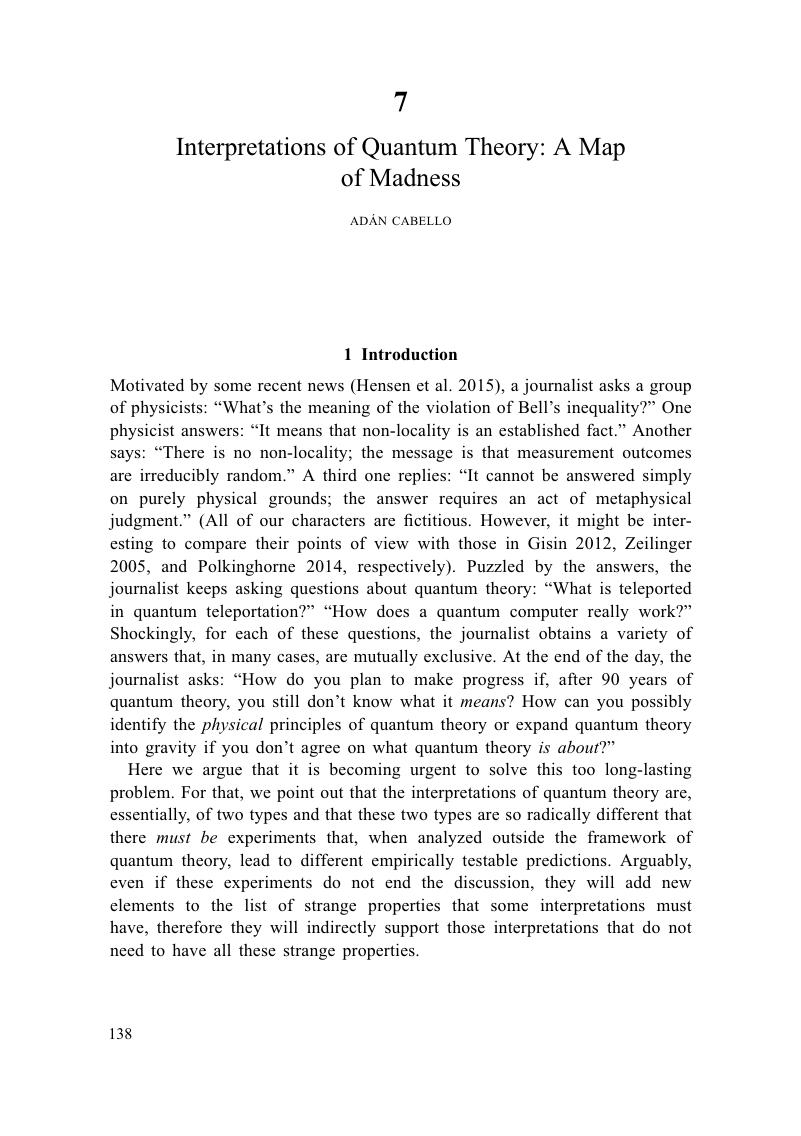Book contents
- What Is Quantum Information?
- What Is Quantum Information?
- Copyright page
- Contents
- Contributors
- Preface
- Introduction
- Part I The Concept of Information
- Part II Information and Quantum Mechanics
- 4 Quantum versus Classical Information
- 5 Quantum Information and Locality
- 6 Pragmatic Information in Quantum Mechanics
- 7 Interpretations of Quantum Theory: A Map of Madness
- Part III Probability, Correlations, and Information
- Index
- References
7 - Interpretations of Quantum Theory: A Map of Madness
from Part II - Information and Quantum Mechanics
Published online by Cambridge University Press: 04 July 2017
- What Is Quantum Information?
- What Is Quantum Information?
- Copyright page
- Contents
- Contributors
- Preface
- Introduction
- Part I The Concept of Information
- Part II Information and Quantum Mechanics
- 4 Quantum versus Classical Information
- 5 Quantum Information and Locality
- 6 Pragmatic Information in Quantum Mechanics
- 7 Interpretations of Quantum Theory: A Map of Madness
- Part III Probability, Correlations, and Information
- Index
- References
Summary

- Type
- Chapter
- Information
- What is Quantum Information? , pp. 138 - 144Publisher: Cambridge University PressPrint publication year: 2017
References
- 17
- Cited by


